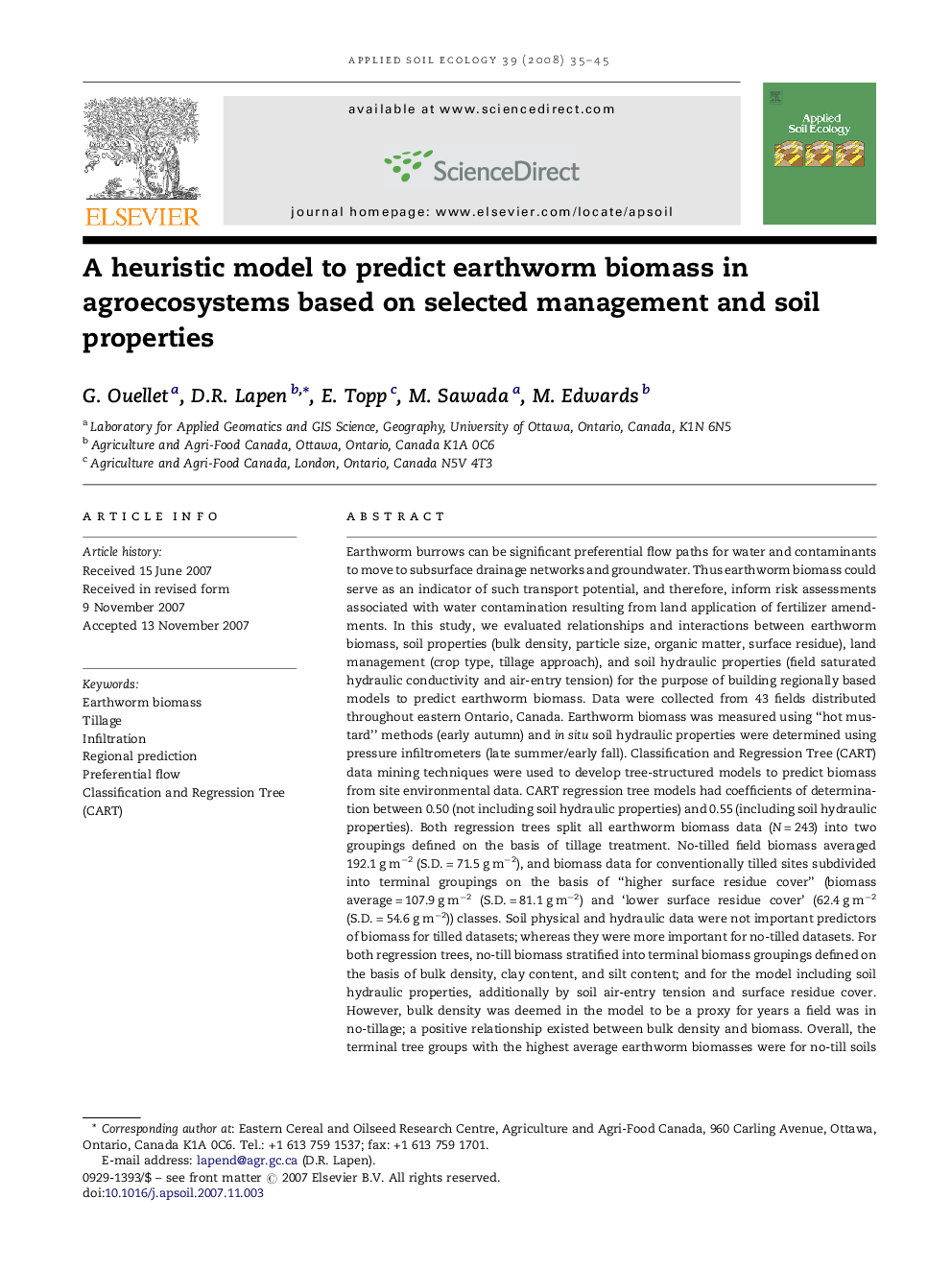| Article ID | Journal | Published Year | Pages | File Type |
|---|---|---|---|---|
| 4383211 | Applied Soil Ecology | 2008 | 11 Pages |
Earthworm burrows can be significant preferential flow paths for water and contaminants to move to subsurface drainage networks and groundwater. Thus earthworm biomass could serve as an indicator of such transport potential, and therefore, inform risk assessments associated with water contamination resulting from land application of fertilizer amendments. In this study, we evaluated relationships and interactions between earthworm biomass, soil properties (bulk density, particle size, organic matter, surface residue), land management (crop type, tillage approach), and soil hydraulic properties (field saturated hydraulic conductivity and air-entry tension) for the purpose of building regionally based models to predict earthworm biomass. Data were collected from 43 fields distributed throughout eastern Ontario, Canada. Earthworm biomass was measured using “hot mustard” methods (early autumn) and in situ soil hydraulic properties were determined using pressure infiltrometers (late summer/early fall). Classification and Regression Tree (CART) data mining techniques were used to develop tree-structured models to predict biomass from site environmental data. CART regression tree models had coefficients of determination between 0.50 (not including soil hydraulic properties) and 0.55 (including soil hydraulic properties). Both regression trees split all earthworm biomass data (N = 243) into two groupings defined on the basis of tillage treatment. No-tilled field biomass averaged 192.1 g m−2 (S.D. = 71.5 g m−2), and biomass data for conventionally tilled sites subdivided into terminal groupings on the basis of “higher surface residue cover” (biomass average = 107.9 g m−2 (S.D. = 81.1 g m−2) and ‘lower surface residue cover’ (62.4 g m−2 (S.D. = 54.6 g m−2)) classes. Soil physical and hydraulic data were not important predictors of biomass for tilled datasets; whereas they were more important for no-tilled datasets. For both regression trees, no-till biomass stratified into terminal biomass groupings defined on the basis of bulk density, clay content, and silt content; and for the model including soil hydraulic properties, additionally by soil air-entry tension and surface residue cover. However, bulk density was deemed in the model to be a proxy for years a field was in no-tillage; a positive relationship existed between bulk density and biomass. Overall, the terminal tree groups with the highest average earthworm biomasses were for no-till soils with bulk densities >1.4 g cm−3 (longer term no-tillage). Regression tree variance reductions associated with the in situ measurements of field saturated hydraulic conductivity and air-entry tension were insignificant or small. Generally, empirical models predicting earthworm biomass at large spatial scales in agroecosystems using soils and land management information, should consider utilizing variables that express tillage practice, surface residue coverage, years in no-tillage, and soil particle size; however, variable interactions should be considered.
